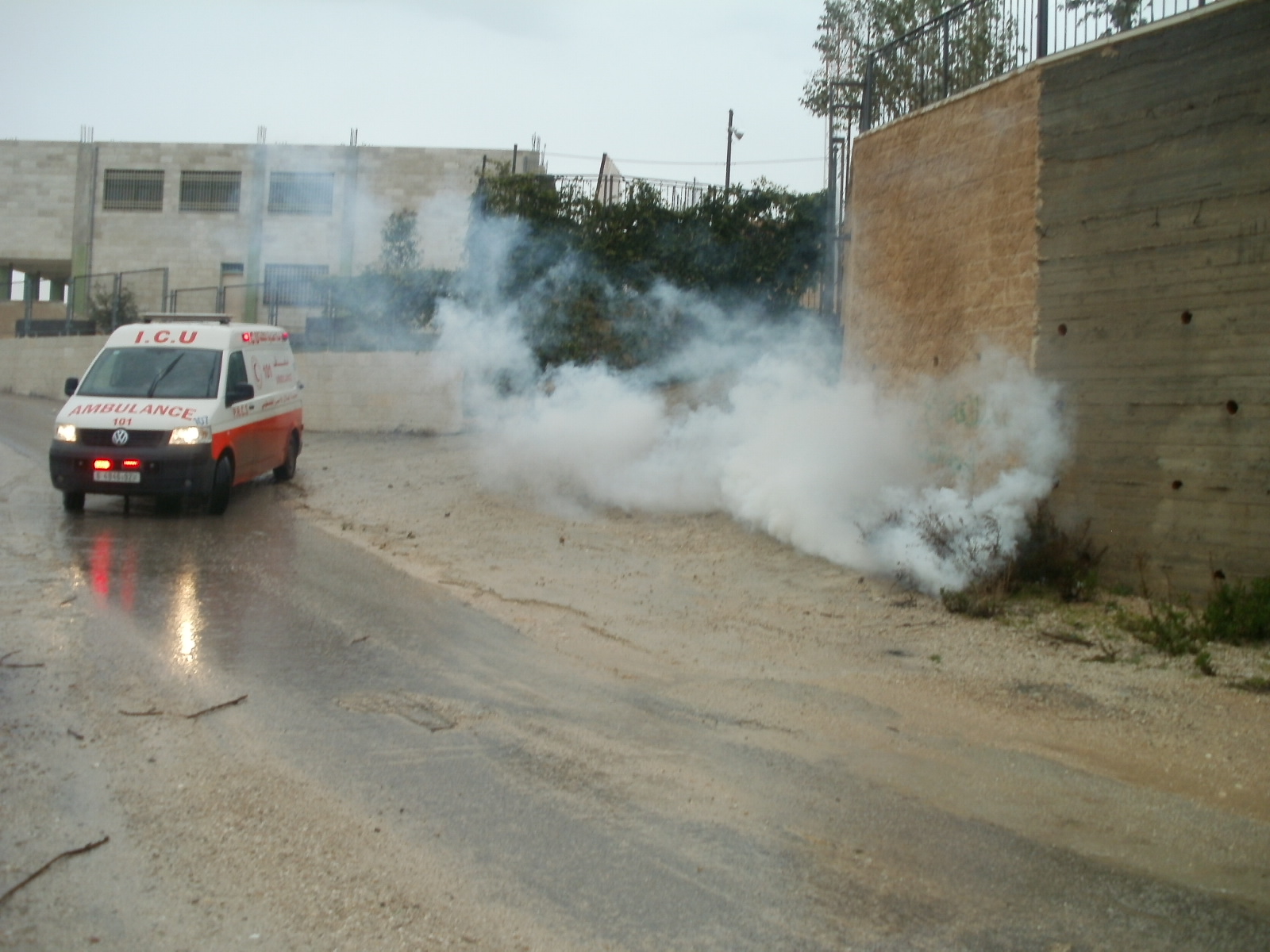Tag: Rubber-coated steel bullets
-
Violence in Ni’lin village: Repression, tear gas and arrests
19th January 2015 | International Solidarity Movement, Ramallah team | Ni’lin, Occupied Palestine The soldiers surrounding Ni’lin did not wait; they began firing tear gas as soon as the villagers walked down into their olive groves. Those who had braved the cold, rainy weather to attend Ni’lin’s weekly Friday demonstration were forced to retreat, running choking from…
-
VIDEO: “They look like they’re in a war zone, but what they’re aiming at is five-year-olds”
31st December | International Solidarity Movement, Khalil team | Hebron, Occupied Palestine By 10:30 am on Tuesday morning of December 30, Palestinian children attending school near Qeitun checkpoint in al-Khalil (Hebron) had endured over forty tear gas canisters, multiple rounds of rubber coated steel bullets and stun grenades, and the arrest of a twelve-year-old boy. Israeli forces fired down the road…
-
ISM activist shot in the head with rubber-coated steel bullet
2nd November 2014 | International Solidarity Movement | Ramallah, Occupied Palestine Today during a protest at Qalandia checkpoint, an Italian ISM volunteer was shot in the head with a rubber-coated steel bullet. The injury is just two centimetres above her left eye. Giulia, the ISMer, stated, “I was just standing on the side of a street, and…



